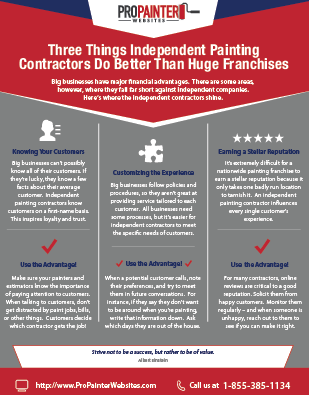How Do Well-Chosen Shades Influence Your Brand'S Good Looks In Commercial Outside Paint? Delve Into The Crucial Facets That Lead Your Decision-Making Procedure
How Do Well-Chosen Shades Influence Your Brand'S Good Looks In Commercial Outside Paint? Delve Into The Crucial Facets That Lead Your Decision-Making Procedure
Blog Article
Content By-Kondrup Helbo
When it concerns business outside painting, the shades you pick can make or break your brand's appeal. Recognizing how different colors affect assumption is key to bring in consumers and building count on. But it's not almost personal choice; local fads and policies play a substantial duty too. So, just how do you discover the ideal balance between your vision and what resonates with the area? Let's check out the vital aspects that guide your color selections.
Comprehending Shade Psychology and Its Effect On Service
When you select shades for your service's outside, recognizing color psychology can significantly affect exactly how potential customers regard your brand name.
Colors evoke feelings and established the tone for your service. For example, blue commonly communicates trust and professionalism and trust, making it optimal for banks. Red can create a feeling of urgency, excellent for dining establishments and inventory-clearance sale.
At the same time, environment-friendly signifies growth and sustainability, interesting eco-conscious consumers. Yellow grabs interest and sparks positive outlook, however way too much can bewilder.
Consider your target market and the message you intend to send. By picking the ideal colors, you not just enhance your aesthetic charm yet additionally align your image with your brand name values, inevitably driving customer involvement and loyalty.
Studying Citizen Trends and Laws
How can you guarantee your exterior painting selections resonate with the community? Beginning by researching neighborhood fads. Go to neighboring organizations and observe their color design.
Make note of what's popular and what feels out of area. This'll help you align your selections with area aesthetics.
Next off, check local guidelines. house painter minnetonka have guidelines on exterior shades, especially in historical areas. You don't want to hang around and money on a combination that isn't compliant.
Involve with local local business owner or area teams to gather understandings. They can give useful feedback on what shades are favored.
Tips for Integrating With the Surrounding Atmosphere
To produce a cohesive appearance that mixes perfectly with your environments, consider the native environment and building styles close by. Beginning by observing the colors of close-by structures and landscapes. click the up coming webpage like environment-friendlies, browns, and soft grays commonly work well in all-natural settings.
If your residential property is near lively city locations, you may select bolder hues that mirror the regional energy.
Next off, consider the building style of your building. Conventional styles may gain from traditional colors, while modern styles can accept modern combinations.
Examine your color selections with examples on the wall to see just how they communicate with the light and setting.
Lastly, keep in mind any type of regional standards or neighborhood aesthetic appeals to guarantee your selection enhances, as opposed to clashes with, the surroundings.
Conclusion
To conclude, picking the best shades for your business exterior isn't practically visual appeals; it's a calculated choice that affects your brand's understanding. By taking advantage of color psychology, considering local patterns, and making sure consistency with your environments, you'll produce an inviting environment that attracts customers. Don't forget to check examples prior to devoting! With the appropriate method, you can raise your service's curb charm and foster enduring consumer engagement and loyalty.
